Advanced SEO for Cleaning Business: Expert Techniques Guide
July 18, 2025 - 28 min read

July 18, 2025 - 28 min read

Table of Contents
| TL;DR Discover 20 advanced SEO techniques that go beyond basic optimization to dominate local search results. From Google Business Profile polygon mapping to AI-powered automation, these strategies help cleaning companies increase visibility, capture more local searches, and generate additional monthly revenue. |
The cleaning industry has undergone a dramatic transformation in recent years, with online visibility becoming the primary driver of new business growth. While many cleaning companies still rely on word-of-mouth referrals, the reality is stark: 97% of consumers search online for local services, and 88% of local searches on mobile devices result in a call or visit within 24 hours.
Yet most cleaning businesses are stuck using outdated SEO tactics from 2015.
They claim their Google listing, sprinkle some keywords on their website, and wonder why competitors are booking all the profitable commercial contracts.
The truth? Basic SEO for cleaning business websites is no longer enough. Today’s search algorithms demand sophisticated strategies that go beyond simple keyword placement.
This guide reveals 20 advanced techniques that leading cleaning companies use to dominate their local markets.
These strategies go beyond theory – they’re practical implementations based on what’s working in competitive markets today. Whether you’re targeting residential customers or pursuing lucrative office cleaning contracts, these techniques will give you the competitive edge needed to rank above established competitors.
KEY HIGHLIGHTS
Advanced Technique for SEO
Most cleaning businesses set a basic radius and miss hyper-local opportunities. Advanced polygon mapping lets you dominate specific neighborhoods where you work, improving local SEO precision.

For example, a Denver cleaning company switched from radius to neighborhood polygons and captured 60% of local searches (up from 20%) while increasing quote requests by 156%. The key is naming polygons strategically, like “Downtown Commercial District,” to strengthen local keyword relevance.
Reviews aren’t just social proof – they’re fuel for ranking. Google rewards fresh, consistent review activity over old volume. Smart cleaning companies engineer review systems through their CRM for cleaning companies that generate steady, positive reviews automatically.

When responding to reviews, use this formula: “Thank you [Name]! We’re thrilled our [service] made your [neighborhood] home sparkle. Looking forward to your next cleaning!” This approach mentions location and service naturally while building rapport.
Generic city pages face massive competition. However, neighborhood-specific content enables you to dominate local searches with less effort and higher conversions. Build authority at the hyper-local level where customers search.
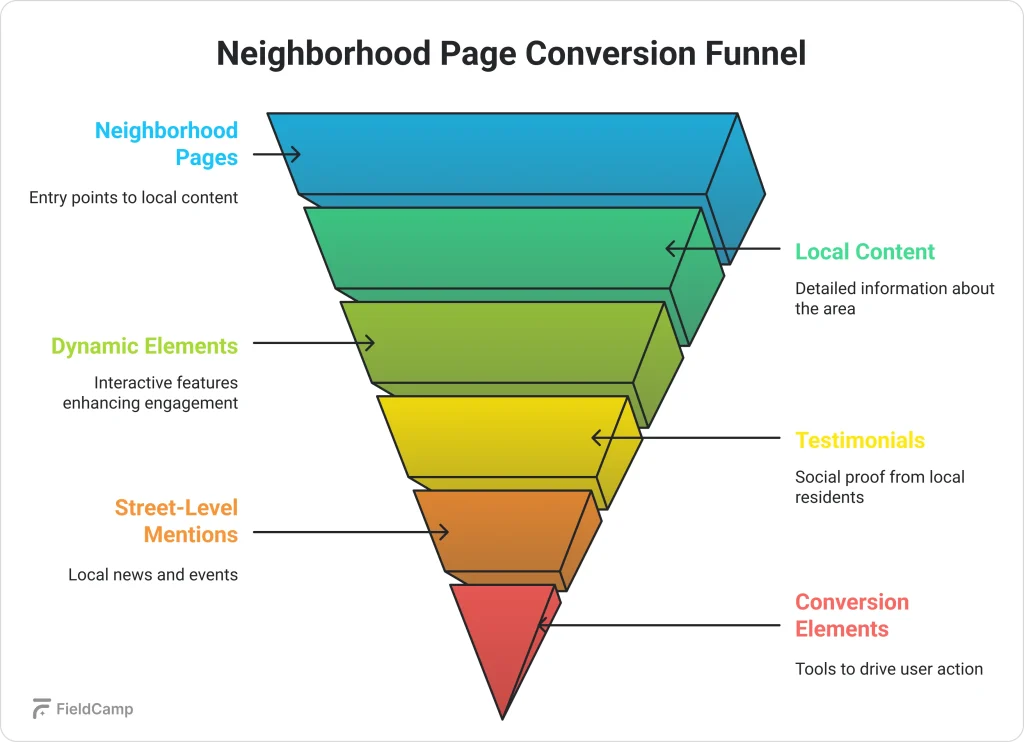
Your content formula should follow this structure: Neighborhood overview + Common cleaning challenges + Local testimonials + Area-specific pricing + FAQs about local concerns = an Authority page.
When writing about Oak Lawn, mention “Our teams service the entire Oak Lawn area, from the historic homes along Turtle Creek to the modern high-rises near Cedar Springs.”
As an example, Sparkle Cleaning Denver built 15 neighborhood pages and grew from 500 to 8,500 monthly visits, achieving a 7.2% conversion rate (vs 2.1% city pages). This generated $67,000/month additional revenue.
Avoid duplicate content with name swaps, thin 300-word pages, or missing local schema markup.
Schema markup is your secret weapon for rich snippets. While competitors display basic blue links, you show star ratings, prices, and availability directly in search results, effectively stealing clicks without needing to rank higher.

Quick implementation through Google Tag Manager enables you to add schema without requiring code changes. Use Schema.org’s generator, test with Google’s Rich Results tool, and fix errors within 48 hours.
Don’t forget to include proper pricing structures – learn how to price your cleaning services competitively to include accurate schema data.
For instance, MaidPro Chicago saw more traffic at the same ranking position after implementing a comprehensive schema. Their CTR increased purely from rich snippets displaying prices, ratings, and availability.
Forget keyword stuffing. Google now understands relationships between concepts. Entity search engine optimization helps you rank for hundreds of terms you never targeted by building topical authority.
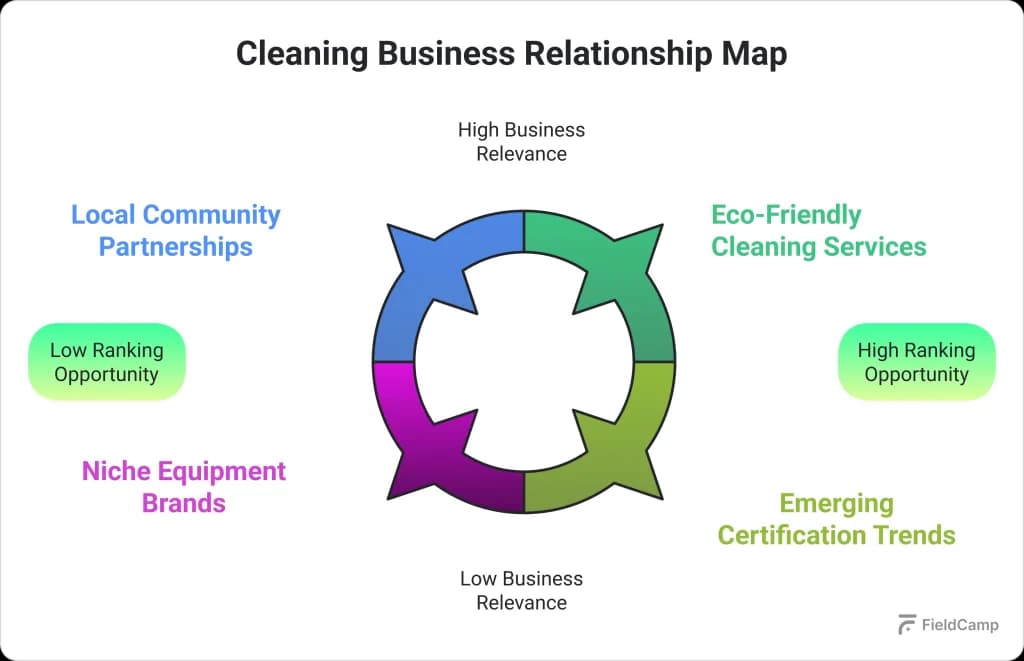
When creating content, every sentence should build multiple entity relationships. Instead of “We offer cleaning services in Dallas,” write “Sparkle Clean Dallas provides EPA-certified green cleaning throughout Uptown Dallas. We partner with Lincoln Property Management to maintain their 50+ residential buildings.”
Crystal Cleaning Boston exemplifies this approach – they built entity authority and gained 200+ keyword rankings they never targeted, including ranking for “apartment cleaning” without ever optimizing for it. Utilize Wikipedia’s category structure to identify related entities and create content that connects those concepts.
Half of your target audience uses voice search, but your site still targets typed keywords. Voice searchers are ready to buy – they just ask differently.
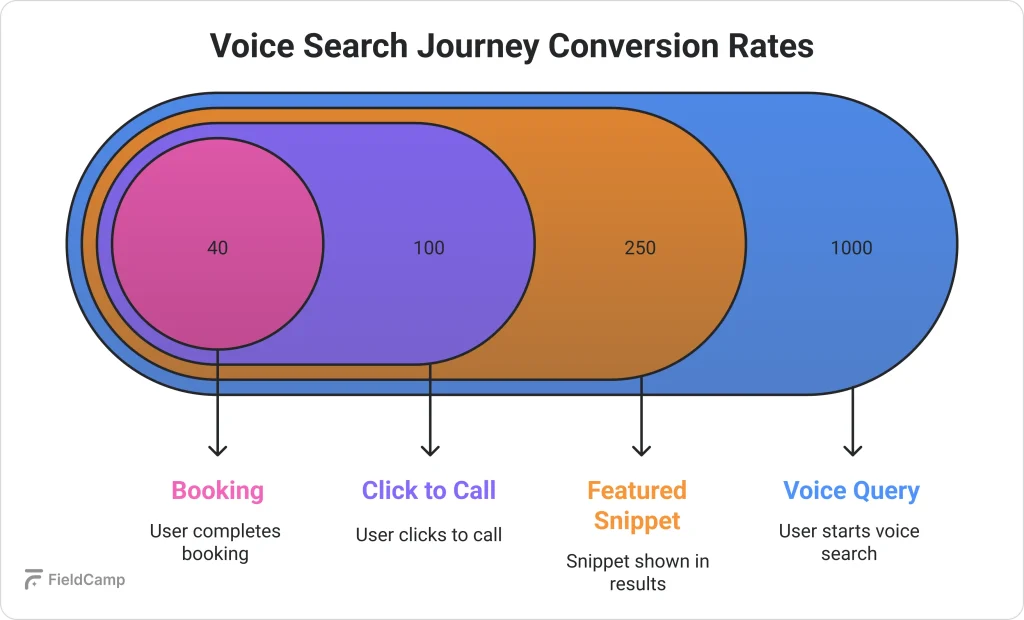
Structure your content with exact questions: “How much do weekly home cleaning services cost in Dallas?” followed by a 40-60 word direct answer, then a detailed explanation. This format wins featured snippets that voice assistants read.
For example, Merry Maids Detroit demonstrates success with this approach – they created 50 question pages, won 12 featured snippets, and increased voice-driven calls by 180%. Google Assistant now recommends them for 8 cleaning queries. Test weekly by voice searching your services on your phone.
Google only looks at your mobile site for rankings. With 73% of cleaning searches on mobile, every second of load time costs you customers and rankings. Keeping an eye on website speed is necessary.

Mobile conversion secrets include bottom navigation bars for thumb-friendly access, autofill-ready forms, 48px minimum touch targets, and instant booking buttons.
Consider using mobile-optimized invoice templates for seamless billing on the go.
For example, Pristine Cleaning LA exemplifies mobile success – they reduced load time from 5.8s to 1.9s, dropped bounce rate from 68% to 31%, and increased mobile bookings by 156%. Test weekly on real devices at 3G speeds, checking thumb reach – not just desktop Chrome.
Backlinks remain Google’s trust signal. But buying links or spamming directories gets you penalized. Smart cleaning companies earn links through value and partnerships.
Your link velocity should follow: Month 1-2 get 5-10 foundational links (chambers, associations), Month 3-6 earn 3-5 quality links monthly (partners, media).
Then maintain 2-3 authority links monthly, ongoing through PR and content.
Create resources others need – like a “[City] Moving Checklist” with cleaning tips that real estate agents constantly link to. One guide can earn 20+ quality links. Consider offering professional invoice templates as a resource for other cleaning businesses.
Static websites die in search results. Google rewards fresh, updated content. Automate updates to stay fresh without constant manual work.
Prevent content decay by setting up traffic drop alerts (20% decline), scheduling quarterly content audits, updating statistics monthly, and refreshing examples regularly. Tools like Zapier + your CMS or WordPress plugins like WP All Import make automation simple. Fresh content signals can improve rankings by 15-20% without any link building. Update your pricing strategies regularly to reflect market changes and keep content fresh.
Traffic without conversions is worthless. Smart cleaning companies optimize every element to turn visitors into bookings, tracking what works with data.

Mobile conversion requires special attention – sticky “Book Now” buttons, form progress indicators, autofill everything possible, and one-tap calling from every page. Test headlines first (30% impact), then CTAs (25%), forms (20%), trust elements (15%), and colors last (10%).
Adding dynamic availability (“Only 2 slots left this week”) increased conversions 34% for one cleaning service with the same traffic. Make booking easy with streamlined invoice systems that reduce friction.
YouTube is the second-largest search engine. Video content can triple your search visibility when optimized properly, appearing in both video results and regular search.
A checklist by HubSpot can be handy for a quick YouTube SEO checklist.

Source: HubSpot
Your YouTube channel needs optimization too – a custom URL with your brand name, channel keywords that match services, and playlist descriptions with local terms.
Additionally, focus on community tab engagement and end screens that drive traffic to your website.
Embed videos with VideoObject markup for rich snippets showing thumbnail, duration, and upload date in search.
Pages with embedded videos see longer visits and higher conversion rates. Show your expertise through detailed cleaning process videos.
Know precisely what competitors do to rank and beat them systematically with data-driven insights.

Use SEMrush or Ahrefs for ranking tracking, BuiltWith for technical stack changes, BuzzSumo for content performance, and Google Alerts for brand mentions. Create weekly reports tracking ranking movements, new content, links acquired, technical improvements, and schema changes.
When a competitor gains 3+ positions, analyze their changes and implement a better version, then track results.
Diverse communities mean untapped markets. While competitors fight over English searches, they dominate Spanish, Chinese, or other language markets with less competition.
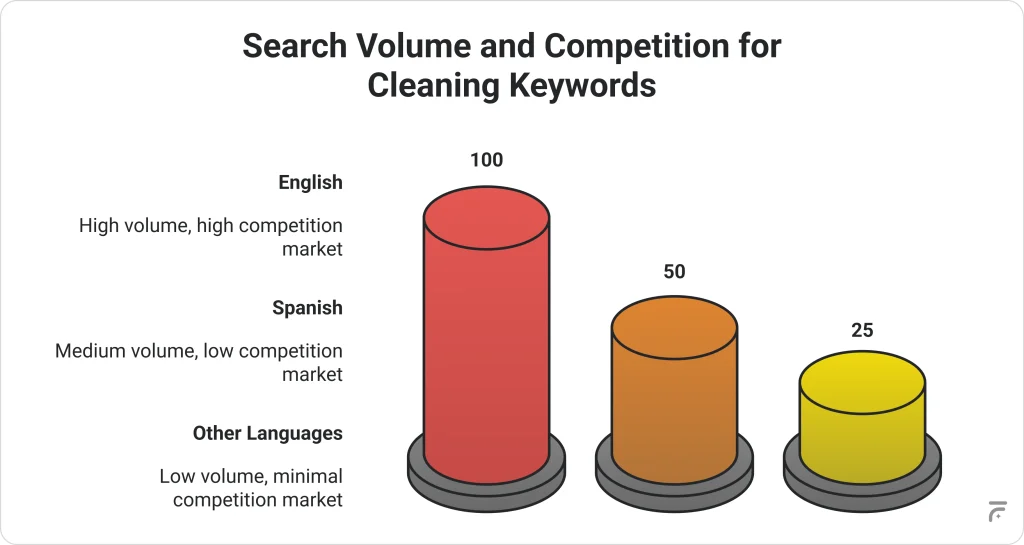
Create separate GMB profiles per language, run translated review campaigns, and promote during cultural holidays.
Use language-specific keywords (not direct translations) and partner with cultural community organizations. Spanish-language pages often rank on page 1 within 60 days due to low competition.
Avoid auto-translation, which can overlook cultural nuances and miss hreflang tags.
Google prioritizes businesses it trusts. For cleaning companies handling home access, building Expertise, Authoritativeness, and Trustworthiness isn’t optional – it’s survival.
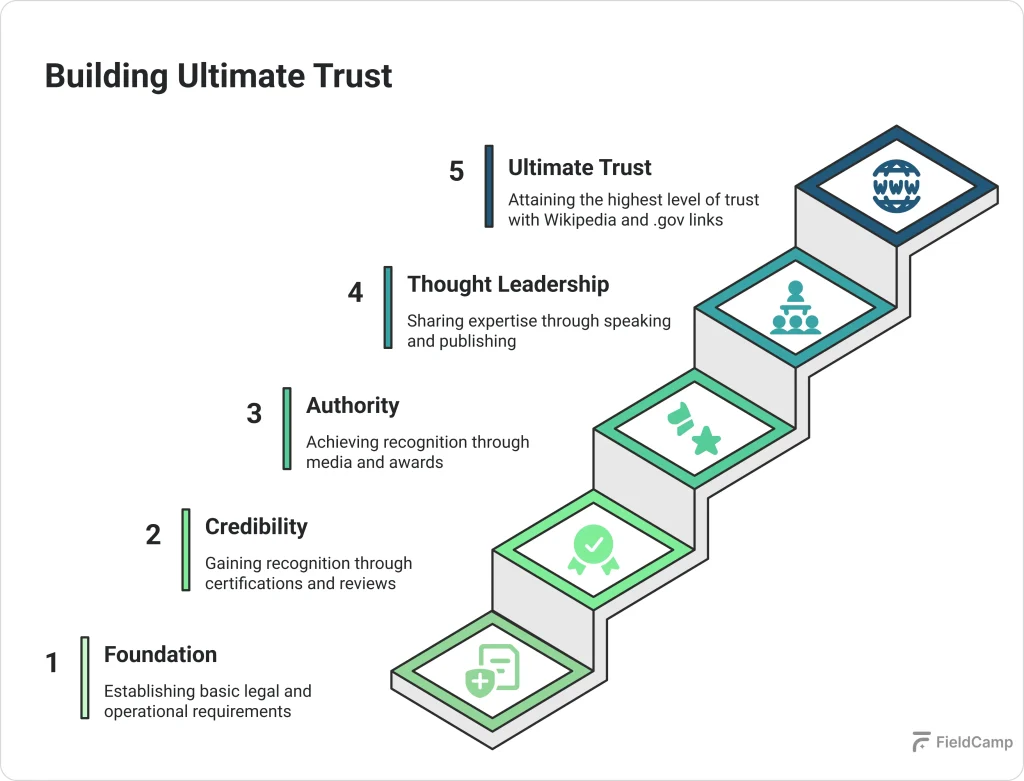
Advanced tactics include pursuing a Wikipedia page (if eligible), earning industry publication mentions, building backlinks from .edu and .gov domains, maintaining BBB accreditation, and earning Google’s verified badge. Mark up every trust signal with the appropriate schema.
High E-A-T sites survived 90% of Google updates that crushed competitors. Build trust through transparent business practices and professional documentation.
Stop reacting to seasons – predict and dominate them. Innovative cleaning companies rank for seasonal terms before demand spikes.

Your seasonal calendar should include the following: January for spring cleaning preparation, March for allergen/pollen content, May for move-out/graduation, August for back-to-school sanitization, October for holiday preparation cleaning, and December for post-holiday cleanup.
Connect weather APIs to your CMS so that when pollen levels spike, allergy cleaning content is automatically activated. Early seasonal optimization captures 60% of seasonal traffic, compared to 20% for reactive publishers.
Technical excellence separates amateur sites from professional operations. Get the foundation right, and everything else falls into place.

Your technical checklist must include the following items: an SSL certificate, a mobile-friendly test passed, no crawl errors in Search Console, a proper robots.txt configuration, canonical tags to prevent duplicates, 301 redirects for moved pages, and validated schema markup.
Advanced moves include dynamic rendering for heavy JavaScript, implementing HTTP/3 for speed, using edge caching strategically, and monitoring the Core Web Vitals API.
Fix crawl errors within 48 hours or lose rankings – set up instant alerts.
AI isn’t replacing SEO pros – it’s making them superhuman. Use AI strategically for tasks that benefit from pattern recognition and scale.
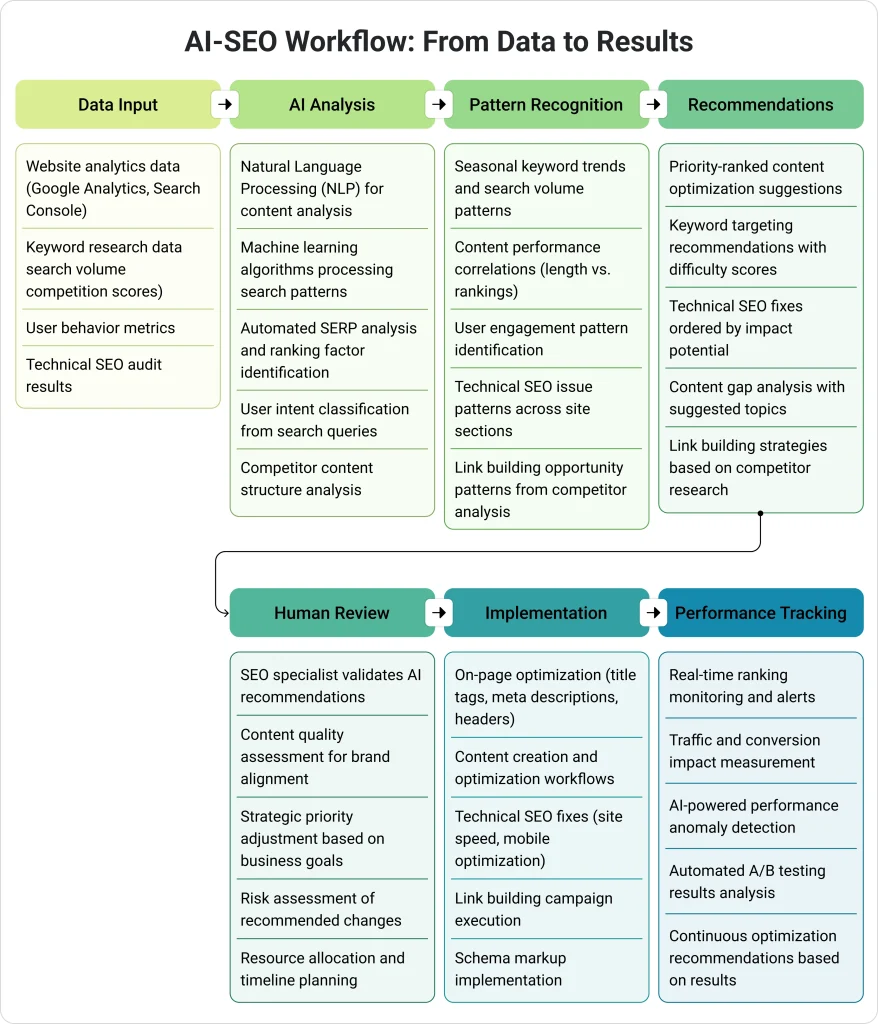
Effective AI tools include ChatGPT for content ideation (not writing), Jasper for meta descriptions, and Surfer for content optimization. Also consider RankBrain optimization tools and predictive analytics platforms.
Follow this formula: AI generates 10 headline options → Human picks the best 3 → AI tests all 3 → Human implements the winner.
Citations are your digital footprint. Inconsistent information confuses Google and customers, killing your local rankings.
Priority order: Google, Bing, Apple Maps, then Yelp, Facebook, Nextdoor, followed by industry directories (such as cleaning associations), local chambers and business groups, and finally neighborhood-specific sites. Build citations in languages your customers speak.
Use a unique phone tracking number for citations to measure their value.
What gets measured gets improved. Most cleaning companies track vanity metrics while missing what drives revenue.

Focus on metrics that matter: revenue per keyword (not just rankings), customer acquisition cost by channel, lifetime value by traffic source, conversion rate by device/location, and market share vs competitors.
Set up Google Analytics 4 with enhanced ecommerce, integrate with your CRM, add call tracking, and connect to revenue data. Discovering that “emergency cleaning” customers have 3x lifetime value justifies aggressive SEO investment.
Stop reporting rankings. Start reporting revenue. Transform SEO from a cost center to a profit driver with executive-level reporting.
Your executive dashboard should display: SEO revenue for this month/quarter/year, cost per acquisition compared to other channels, market share growth percentage, ROI percentage (revenue-to-investment ratio), and changes in competitive positioning. Create monthly executive summaries (1 page), quarterly deep dives (5-10 pages), and annual strategy reviews.
Show lost revenue from ranking drops: “Falling from #2 to #5 for ‘office cleaning’ cost us $15K last month” gets immediate attention. Utilize professional invoicing software to accurately track revenue by source.
These 20 advanced SEO techniques represent the cutting edge of search optimization for cleaning businesses. While competitors waste time on outdated tactics, you now have a roadmap to domination. The cleaning companies that implement these strategies don’t just rank well – they become the default choice for customers searching online.
Remember, SEO success isn’t about using every technique ideally. It’s about implementing strategies systematically, measuring results obsessively, and optimizing continuously. Start with the methods that align with your current resources and capabilities. Build momentum with early wins, then expand your efforts as results justify further investment.
The cleaning industry is evolving rapidly, and online visibility increasingly determines success. By mastering these advanced SEO strategies, you’re not just improving rankings – you’re building a sustainable competitive advantage that compounds over time. While others fight for scraps, you’ll capture the lion’s share of profitable customers searching for cleaning services.
Take action today. Choose three techniques from this guide and implement them this week. Track your results, refine your approach, and watch as your cleaning business rises above the competition. The future belongs to cleaning companies that embrace sophisticated SEO strategies. Will yours be among them?
Your Competition is Already Using These SEO Secrets
Don’t let them steal your customers. These 20 strategies level the playing field. Implementation guide included.
The most effective marketing strategy for cleaning businesses combines advanced local SEO strategies with systematic review generation and digital marketing. Focus on dominating neighborhood-specific searches through polygon mapping in Google Business Profile, create content for each service area you target, and maintain a velocity of 8+ fresh Google reviews monthly. This online marketing approach costs less than paid ads while delivering sustainable, long-term growth. Companies using these advanced techniques see better visibility in search engine rankings and higher conversion rates than those relying on traditional marketing alone. The key is attracting potential customers through targeted keywords rather than generic terms.
Finding local customers requires understanding where and how they search for the best cleaning services. Start by optimizing for voice searches and long-tail keywords like “Who can clean my office today?” and targeting micro-moments when potential customers need immediate service. Build neighborhood-specific landing pages that convert better than generic city pages, focusing on local clients in your service area. Your local SEO efforts should include partnering with other local businesses for referrals. For a deeper dive into customer acquisition strategies and industry insights, check out our comprehensive guide on cleaning industry trends and statistics that reveal exactly where your customers are searching and what they’re looking for.
To rank higher on Google Business profile, move beyond basic optimization to advanced polygon mapping that targets specific neighborhoods rather than generic radius settings. Complete every field in your profile, maintain 100% accuracy, and use the GMB API to create weather-triggered posts that keep your profile active. Add location-specific Q&As like “Do you service [Neighborhood Name]?” and respond to all Google reviews within 2 hours using our proven formula. Implement local link-building strategies and ensure mobile optimization for better local search visibility. Businesses using these local SEO strategies see improved rankings and more quote requests from local customers compared to radius targeting.
Growing your cleaning company requires a multi-channel approach that combines your cleaning company’s SEO dominance with strategic customer acquisition. Implement the 20 advanced SEO techniques outlined above to increase organic visibility and attract website visitors, then focus on converting that traffic through optimized service pages and trust signals. Create separate landing pages for each neighborhood you serve, whether you’re targeting residential or commercial cleaning company prospects. Use keyword research to identify opportunities and build relationships with local news outlets for publicity. For a complete blueprint on scaling your cleaning business and attracting high-value clients, explore our detailed guide on how to get clients for your cleaning business.
Pricing your cleaning services correctly requires balancing market rates, overhead costs, and profit margins while staying competitive in local search rankings. Use dynamic pricing on neighborhood pages to show area-specific rates, whether you’re an office cleaning company or a residential service. Implement schema markup to display price ranges directly in search engine rankings, helping potential customers see your value immediately. This transparency builds trust and pre-qualifies leads searching for the best cleaning services.